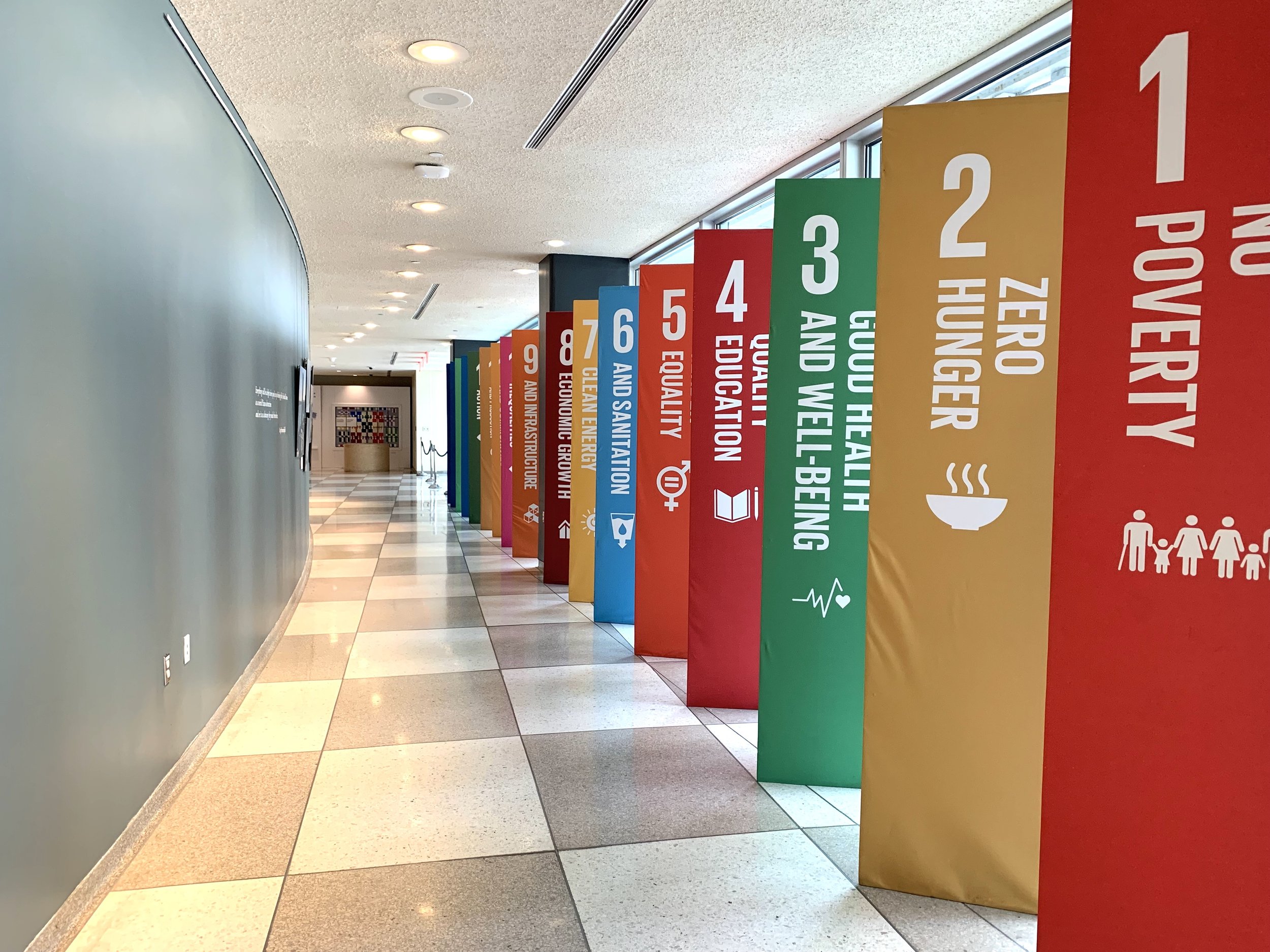Tech for Good? Why tech needs to adopt a regenerative mindset
Innovation happens in the intersections. An installation by @Sou_Fijomoto at Serpentine Gallery
From its very blueprint, the UN Sustainable Development Goals recognises Science, Technology and Innovation (STI) as a key implementation tool alongside other measures, towards the achievement of inclusive societies, regenerative environments, open and supportive governance, and sustainable livelihoods.
Its official document Transforming our world the 2030 Agenda for Sustainable Development adopted by the 193 Member States of the United Nations, mentions STI fourteen times and each term individually another sixty times. It also calls for a global Technology Facilitation Mechanism (TFM) to enable international cooperation on access to STI and enhanced knowledge sharing to achieve the SDGs. The 17 goals have a deadline of 2030.
While the SDGs framework provides a comprehensive international policy framework addressing the present convergence of multiple crises, there is good reason to suspect that the conceptualisation of ‘sustainability’ being adopted by tech companies, must imply lines of work that go beyond sustaining a fractured relationship between people and the living world.
UNEP (2019) argues that even though tension will always exist between human lifestyles and the interests of other species and ecosystems, there is international consensus that this troubled relationship cannot continue in the current form without a worsening cost to nature and threat to human survival.
All living systems are in a continuous state of transition, either evolving or devolving (Regenesis Group) The question is how to accelerate technological innovations that bring more vitality and viability towards evolving systems while being good and just for society (and profitable). Therefore, instead of doing less damage to the environment through ‘green’ tactics, tech companies need to raise their ambition to regenerative approaches and design information systems that can seriously and earnestly play a role in implementing the systems-wide SDGs.
Three possible shifts that tech corporations may consider in the pathway towards SDGs implementation
Shift 1 – Developing a Regenerative Mindset
SDGs will create at least 12 trillion dollars in new market opportunities by 2030. The Goals intend to bring millions of people previously left largely to public aid support systems, into the global economy. But what sort of economy? Business cannot succeed in ecologies and societies that fail. Technologists are invited to train to become regenerative designers, contributing to a significant evolution of the field of sustainability and in their careers. They need to go to the very heart of markets and align new revenue opportunities with a value-generating capability that make both people and the rest of the natural world stronger, more vibrant and resilient
Shift 2- Activating Place-based Nested Systems
Fragmentation is the nemesis of whole systems. Information Technologies are spatial and work with large systems, but to become regenerative they must adopt a place-based perspective nested in larger systems. This implies innovating towards locally adaptable, resource conserving policies, activities and products, carefully tailored to the bio-cultural-spatial uniqueness of each location. When acting locally, know that you are part of the huge global efforts of 193 nations and apply that global muscle to support your local level. Promote a tighter connection between local knowledge and action and global norm-setting.
Shift 3 – Moving from Resolving Problems to Unleashing Potential
The IT ecosystem has grown into a thriving marketplace of needs, problems and solutions. Tech for Good should not be focusing on making problems less bad, but rather in making whole systems more fully alive, shifting from the perspective of problem to potential. Potential can be realised, whereas problems can only be solved. Potential looks forward, problem-solving looks backward. There is always more potential than what has been manifested.
For instance, the latest UN Forum Technology Facilitation Mechanism in July discussing cooperation in STI around SDGs thematic areas, showcased concrete lines of work in the areas of carbon dioxide removal technologies Globally, scientists predict that up to 10 GtCO2 will need to be removed annually from the atmosphere by 2050, with increased removal capacity up to 20 GtCO2 per year by 2100. This is STI in action unleashing the potential of net-zero societies.
Source: DESA/DSDG adopted from InterAcademy Partnership (IAP) Report on Improving Scientific Input to Global Policymaking with a Focus on the UN Sustainable Development Goals, 2019, accessed January 15th 2020: https://www.interacademies.org/50429/SDGs_Report
Recently, UN Deputy Chief, Ms. Mohammed recalled that the SDGs remain a very relevant framework in this new era, in particular to deliver sustainable development in Africa. Indeed, Africa is the continent that has the lowest total greenhouse gas emissions – 7% of the world’s share - and the lowest per capita emissions. It may seem inconceivable but up to 45% of Africa’s population has no access to electricity, whilst the continent has the world’s largest potential for renewable forms of energy. The potential to democratise ICT access in the African continent is immense.
The business case for supporting the SDGs is incredibly compelling. International cooperation, including South-to-South and multi-stakeholder partnerships, are key to mobilizing and harnessing STI and accelerating progress towards sustainable recovery and development. For those new to the field considering launching or changing their careers, students, veterans, social and tech innovators: think #SDG12 and innovate within planetary boundaries!
For engaging in these discussions and more - join me and a line up of global thought leaders in the forthcoming IBM zDay free 1-day virtual conference. 15 September Register here



